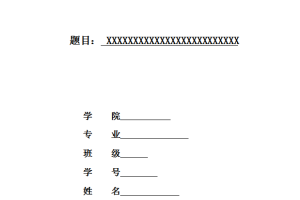Abstract
Humor is a way of lingual expression as well as an important part of language and culture. Anyone with strong sense of humor in daily dealings can acquire a more harmonious interpersonal relationship and a smoother social contact. So this paper will study on the comparison between the Chinese and western humor from the perspective of intercultural communication. At first this paper will mainly deals with the definition of humor and its characteristics, following some similarities of humor in the East and the West. The similarities between Chinese and western humors include functions and techniques. The important part of the paper is to introduce their differences in humor, specifically are topics, joking objects, applications and forms. Causes will be analyzed later. There are three main reasons to explain these differences. They are the cultural difference, different social roots, and value diversities. Chapter five puts forward two pieces of suggestion to avoid these misunderstanding. Last chapter comes the conclusion part.
Key words: humor; cross-culture; comparison
摘 要
幽默是语言表达的一种方式,也是语言和文化的摘要组成部分。人们在日常生活中如果能常常表现出幽默的一面,那么他的人际关系会非常融洽,人际交往相应的就会顺利。本文主要从跨文化的角度对中西幽默进行对比。论文开头主要介绍幽默的定义及其特点,后面阐述了中西幽默的一些相同点。文中主要分析中西幽默中的不同,主要从幽默的主题的不同,对象的不同,应用方式的不同以及形式的不同四个方面来说明。然后开始找原因:文化背景,社会根基和价值观的不同。第五部分就以上这些问题提出了两个小建议。一是更多地了解对方国家的文化,二是分场合开玩笑。最后一段就以上所有内容作出一个总结。
关键词:幽默;跨文化;异同性
Contents
Introduction……………………………………… …………………………………….1
- A Brief Introduction to Humor………………………………………………..2
1.1 Definition of Humor…………………………………………………2
1.2 Characteristics of Humor…………………………………………………..2
- Similarities and Differences between Chinese and Western Humor ……………………………….………………………………………2
2.1 Similarities……………….…………………………………….……2
2.2 Differences…………….…………………………………………4
III. Causes behind the Differences…………………………………………………6
3.1 Cultural Backgrounds…………………………………………..……6
3.2 Social Roots……………………………………………………………………………7
3.3 Values Diversity………………………………………………………………………7
- Avoidance of Misunderstandings………………………………………………7
4.1 Understanding the Cultural Differences…………………………….7
4.2 Considering the Situation ………………………………………… .8
Conclusion…………………………………………………………………………….. .8
Bibliography………………………………………………………………………….. .9





